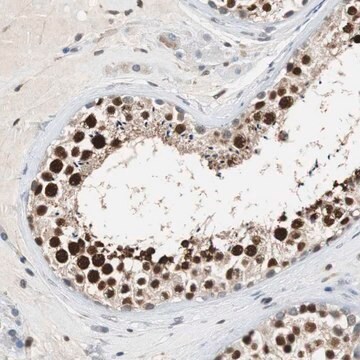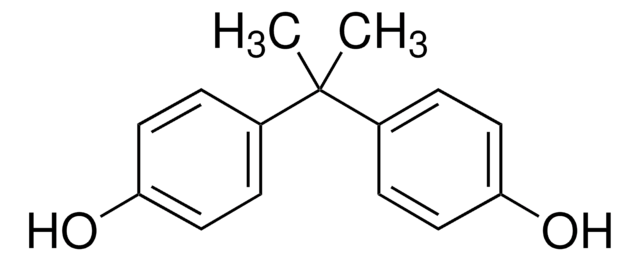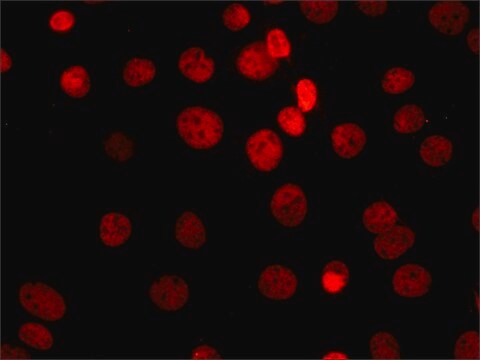04-1557
Anti-SIRT1 Antibody, clone 10E4
clone 10-E-4, from mouse
Synonim(y):
SIR2-like protein 1, sir2-like 1, sirtuin (silent mating type information regulation 2 homolog) 1 (S. cerevisiae), sirtuin (silent mating type information regulation 2, S. cerevisiae, homolog) 1, sirtuin 1, sirtuin type 1
About This Item
ICC
IHC
IP
WB
immunocytochemistry: suitable
immunohistochemistry: suitable
immunoprecipitation (IP): suitable
western blot: suitable
Polecane produkty
pochodzenie biologiczne
mouse
Poziom jakości
forma przeciwciała
purified immunoglobulin
rodzaj przeciwciała
primary antibodies
klon
10-E-4, monoclonal
reaktywność gatunkowa
mouse, human
opakowanie
antibody small pack of 25 μL
metody
ChIP: suitable
immunocytochemistry: suitable
immunohistochemistry: suitable
immunoprecipitation (IP): suitable
western blot: suitable
numer dostępu NCBI
numer dostępu UniProt
Warunki transportu
ambient
docelowa modyfikacja potranslacyjna
unmodified
informacje o genach
human ... SIRT1(23411)
Opis ogólny
Specyficzność
Immunogen
Zastosowanie
Chromatin Immunopreiciptiation: Reported by independent researcher using representative lot.
Immunohistochemistry: Reported by independent researcher using representative lot.
Epigenetics & Nuclear Function
Histones
Jakość
Western Blot Analysis: 0.5 µg/ml of this antibody detected SIRT1 on 10 µg of HeLa cell lysate.
Opis wartości docelowych
Postać fizyczna
Przechowywanie i stabilność
Komentarz do analizy
HeLa cell lysate
Inne uwagi
Oświadczenie o zrzeczeniu się odpowiedzialności
Nie możesz znaleźć właściwego produktu?
Wypróbuj nasz Narzędzie selektora produktów.
polecane
Certyfikaty analizy (CoA)
Poszukaj Certyfikaty analizy (CoA), wpisując numer partii/serii produktów. Numery serii i partii można znaleźć na etykiecie produktu po słowach „seria” lub „partia”.
Masz już ten produkt?
Dokumenty związane z niedawno zakupionymi produktami zostały zamieszczone w Bibliotece dokumentów.
Nasz zespół naukowców ma doświadczenie we wszystkich obszarach badań, w tym w naukach przyrodniczych, materiałoznawstwie, syntezie chemicznej, chromatografii, analityce i wielu innych dziedzinach.
Skontaktuj się z zespołem ds. pomocy technicznej







